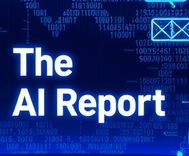2 artificial intelligence (AI) stocks the U.S. government is actively backing in 2025

The AI Report
Daily AI, ML, LLM and agents news
Unlocking the Future: The U.S. Government's Push for AI Software and What It Means for Investors
The landscape of artificial intelligence investment is rapidly evolving, with a significant shift now underway within the U.S. government. While many investors traditionally focus on the hardware giants powering AI – the chipmakers and cloud infrastructure providers – a compelling new frontier is emerging: enterprise-grade AI software. This strategic pivot, championed by figures like Defense Secretary Pete Hegseth, aims to embed sophisticated software solutions across federal operations, moving beyond physical infrastructure to intelligent systems.
This initiative, encapsulated by the Software Acquisition Pathway (SWP), prioritizes efficient, secure, and timely delivery of software. This shift opens immense opportunities for companies specializing in AI-powered data analytics, logistics, cybersecurity, and more. Among the key beneficiaries of this governmental drive are Palantir Technologies and BigBear.ai, two companies actively securing pivotal contracts in the public sector. Understanding their approaches and market positions is crucial for investors looking to capitalize on this trend.
Palantir Technologies: The Vanguard of Government AI
Palantir Technologies has solidified its position as a dominant force in providing AI solutions to the U.S. government. The company has secured several high-profile, multi-year deals throughout 2025, demonstrating its critical role in national defense and intelligence. A prime example is the deepening of its relationship with the Department of Defense (DOD) through a substantial extension of its Maven Smart System (MSS). This program alone has reached a total value of $1.28 billion, establishing itself as a significant long-term revenue stream for Palantir. Furthermore, the company recently secured another monumental deal with the Army, reportedly valued at up to $10 billion over the next decade.
Palantir's influence extends beyond military applications. It is actively developing the Immigration Lifecycle Operating System, known as ImmigrationOS, for Immigration and Customs Enforcement (ICE). These substantial contracts provide Palantir with exceptional revenue visibility and foster sticky client relationships, creating fertile ground for future upsells and cross-sells of additional services. By successfully translating its defense expertise into broader government functions, Palantir is not only expanding its public sector footprint but also reinforcing the versatility and indispensability of its AI backbone across diverse U.S. government agencies.
BigBear.ai: A Focused Contributor to Public Sector AI
BigBear.ai is another prominent AI software developer making inroads with the U.S. government, albeit with a more specialized focus. Earlier this year, the company secured a contract with the DOD to develop a system designed to aid national security decision-making. This system leverages advanced analytics to identify and interpret trends and patterns within foreign media, offering crucial intelligence support.
Following this, BigBear.ai secured a $13.2 million deal over three and a half years, aimed at bolstering the Joint Chiefs of Staff's capabilities in force management and data analytics. The company has also engaged in strategic partnerships, notably with Hardy Dynamics, to advance the Army's utilization of machine learning and AI for autonomous drone technology. Beyond defense, BigBear.ai is contributing to border security through a partnership with U.S. Customs and Border Protection. Their biometric AI infrastructure system, Pangiam, is being deployed at major North American airports to enhance arrival streamlining and improve security protocols.
Choosing Wisely: Palantir's Edge Over BigBear.ai
When comparing Palantir Technologies and BigBear.ai, Palantir emerges as the more compelling investment choice for several reasons. While BigBear.ai has demonstrated its capability to win meaningful government contracts, its engagements tend to be more niche-focused and of a smaller scale. Palantir, in contrast, consistently secures multibillion-dollar deals spanning multiple critical government platforms.
The distinction lies not just in contract size but also in the breadth of application and strategic importance. Palantir's comprehensive platforms are becoming the underlying data and AI infrastructure for entire departments, offering a more foundational and expansive role. BigBear.ai's appeal, particularly among some retail investors, often stems from the hope that it will replicate Palantir's success. However, successful investing hinges on prudent valuation and strategic analysis, not mere speculation. Palantir's proven ability to secure large-scale, long-term, and widely applicable contracts provides it with a significant competitive advantage and establishes it as a more robust player in the burgeoning government AI software market.
Navigating Valuation: A Cautious Approach to Palantir
Despite Palantir's undeniable prowess and its pivotal role in government AI, its current stock valuation warrants a cautious approach. While some analyses, particularly those using software-specific metrics like the Rule of 40, might suggest Palantir is reasonably priced, traditional valuation methods, such as the price-to-sales (P/S) ratio, paint a different picture. Palantir's P/S ratio indicates that it is among the priciest software-as-a-service stocks compared to its peers. Its valuation has expanded significantly as the stock has rallied, making it historically expensive.
Palantir is indeed an impressive company, consistently demonstrating its ability to deliver crucial applications for some of the world's most demanding clients. However, smart investors understand that even the best companies can be overvalued at certain times. For those considering an investment, waiting for a more reasonable entry point and a more appropriate price could yield better long-term returns. Patience and a disciplined approach to valuation remain paramount, even when faced with high-flying AI innovators.

The AI Report
Author bio: Daily AI, ML, LLM and agents news
